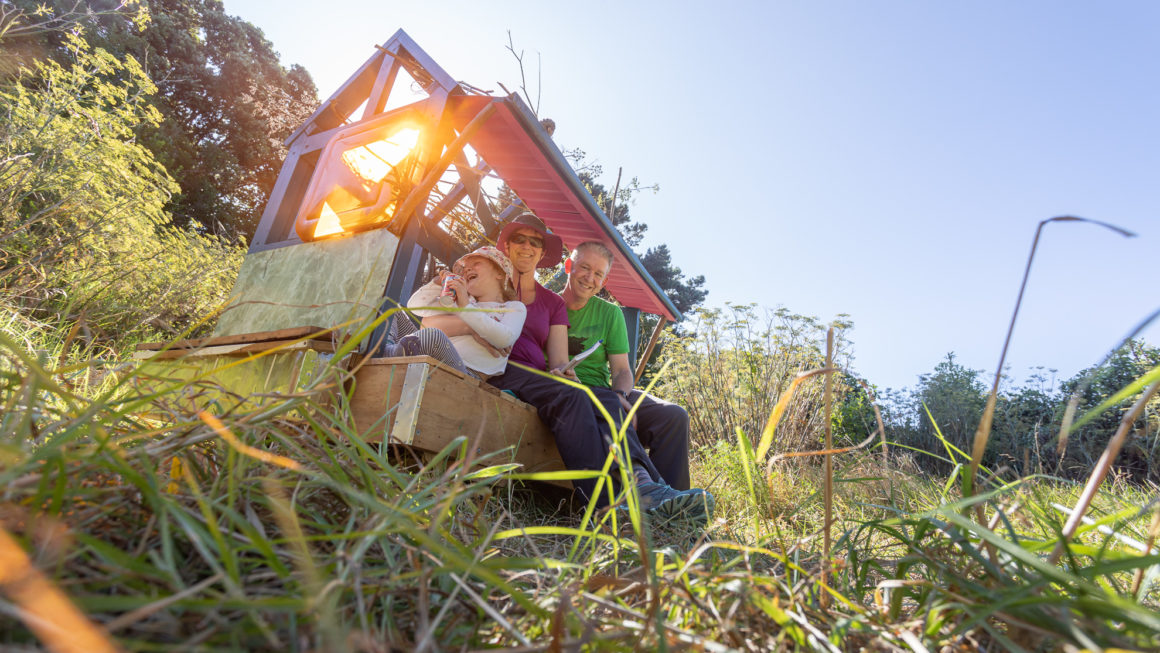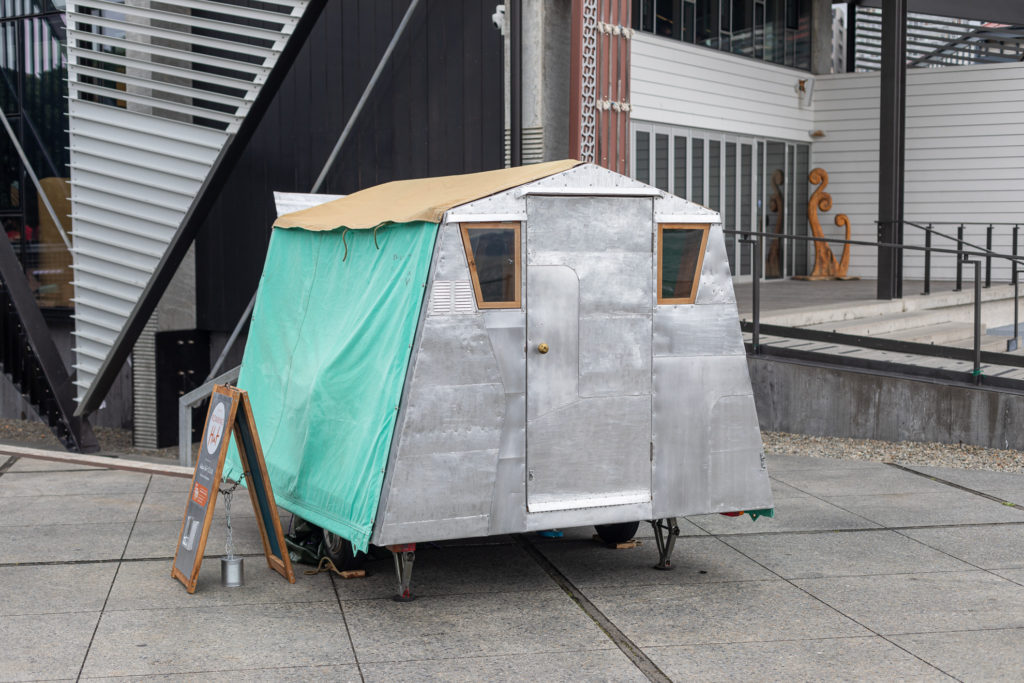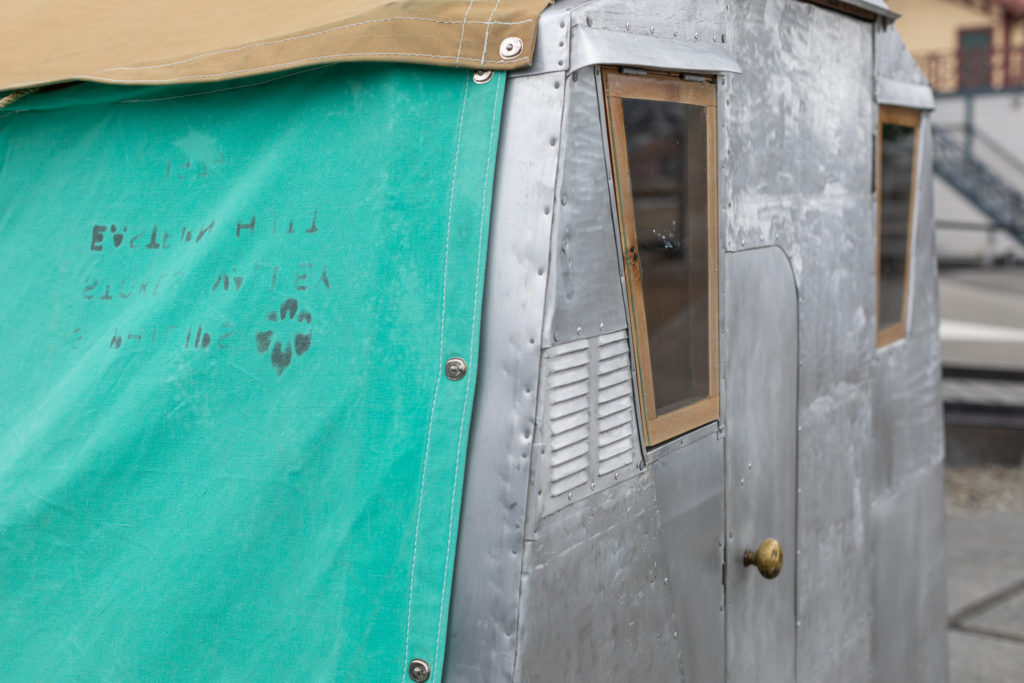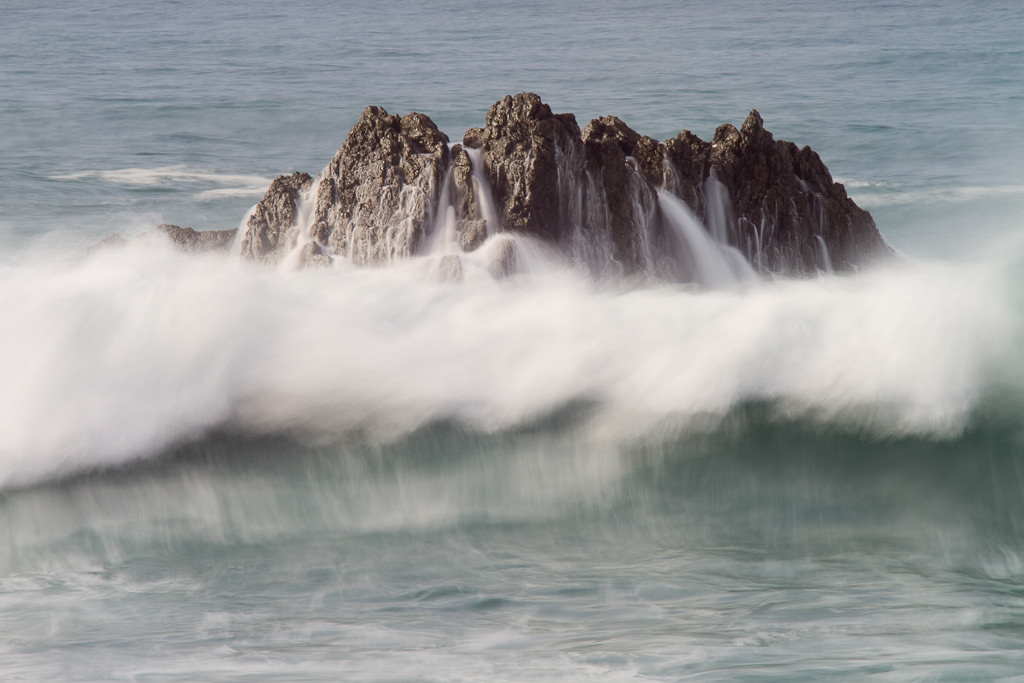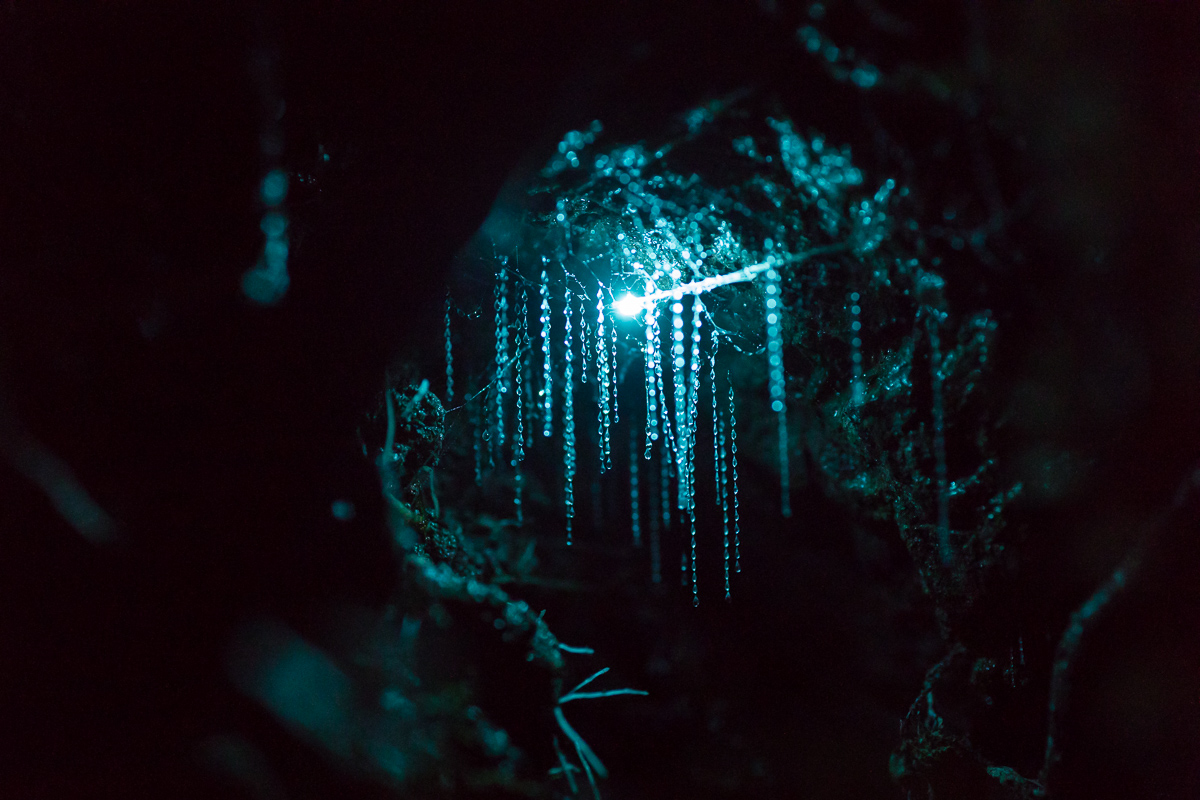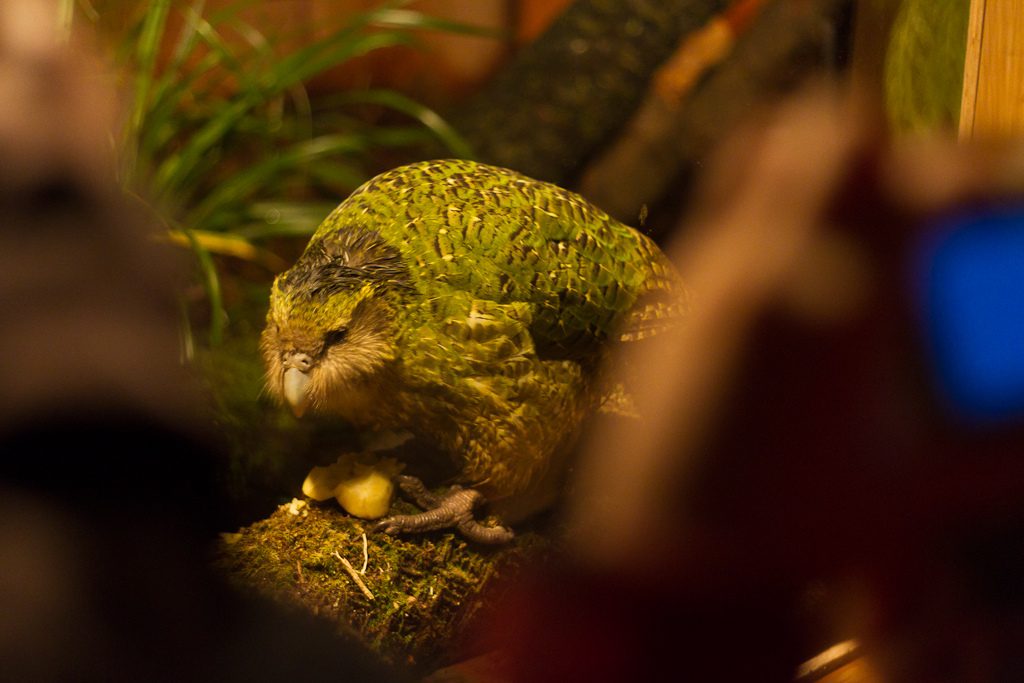Five years ago Keryn and I along with a one-year-old Alayna spent some wonderful times exploring Wellington and checking out 7 Miniature Huts dotted around the landscape, put in place by local artists Kemi & Niko. From tiny to large the adventure was as much about following clues to find the huts as much as marvelling over hut construction and all the little details once they were found. You can read about those journeys across three blogs: part 1, part 2 & part 3. These fond memories meant we were very excited when it was revealed that a new hut project would appear at part of the 2020 NZ Festival.
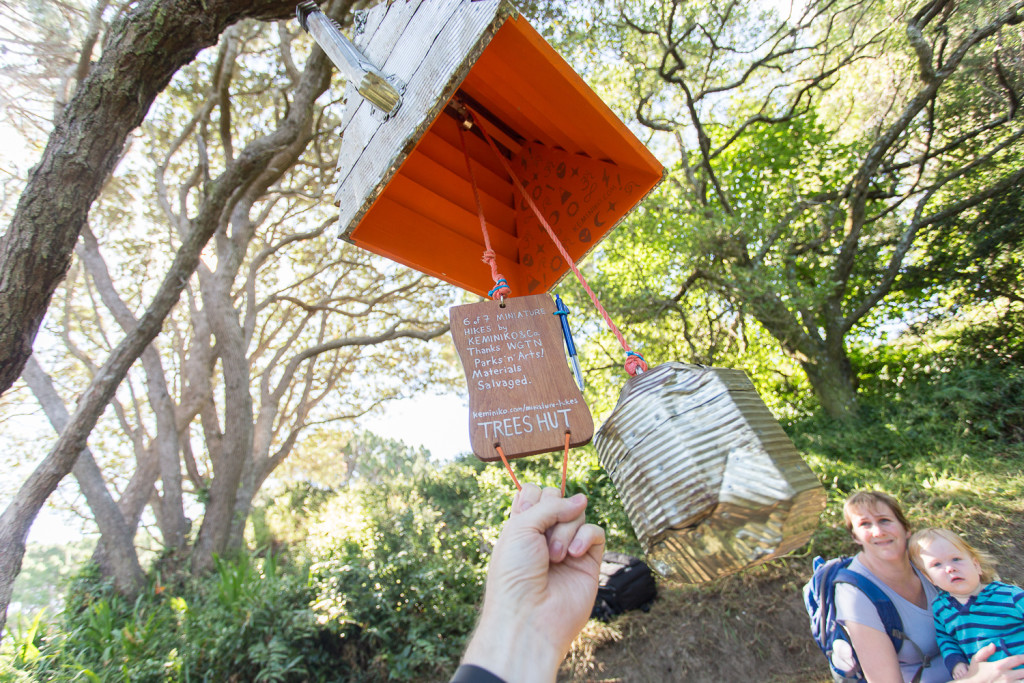
The hidden notebook 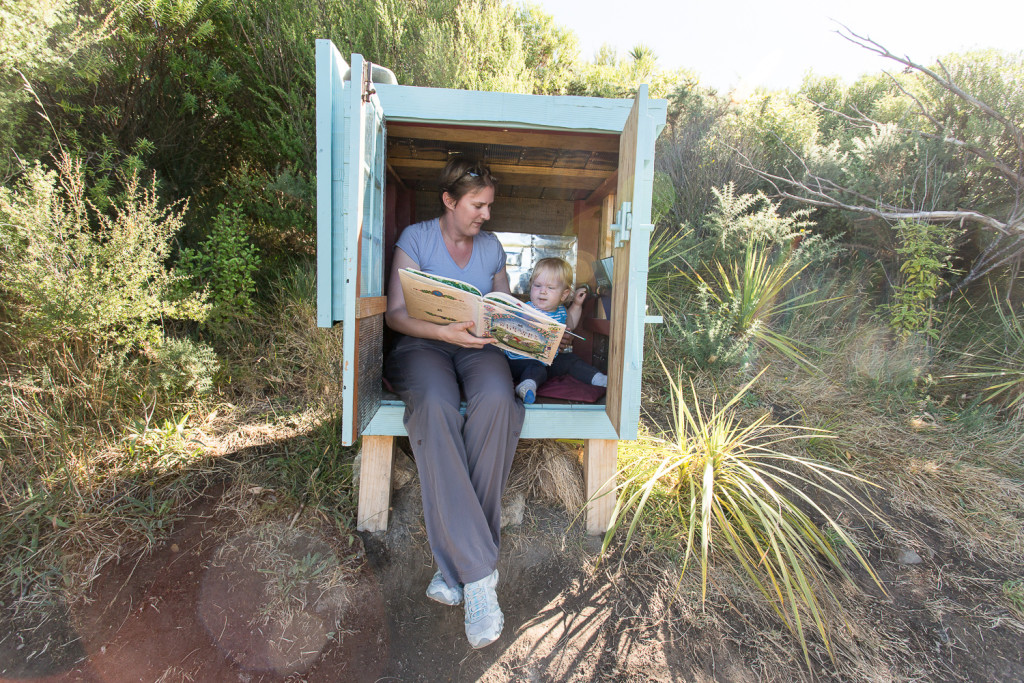
Keryn reads to Alayna 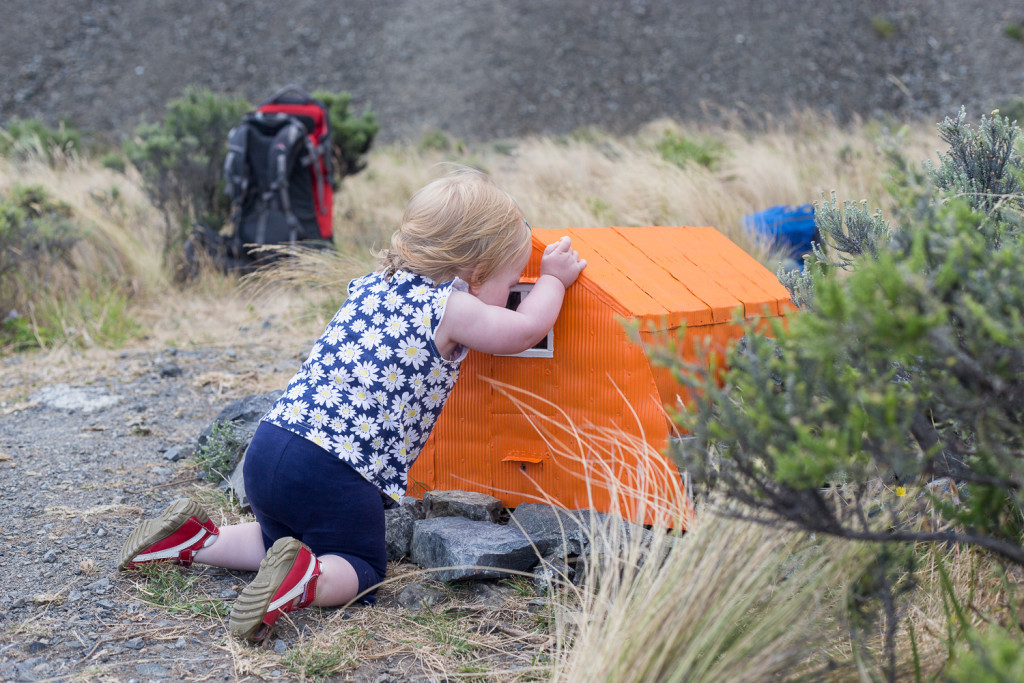
Taking a closer look 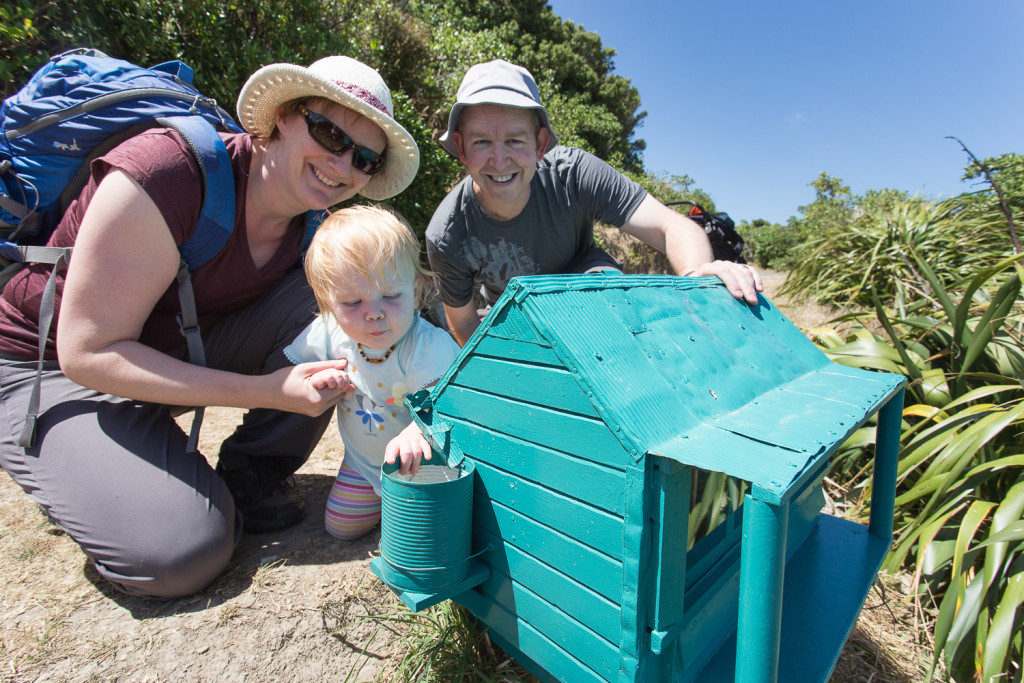
DOC Hut family photo 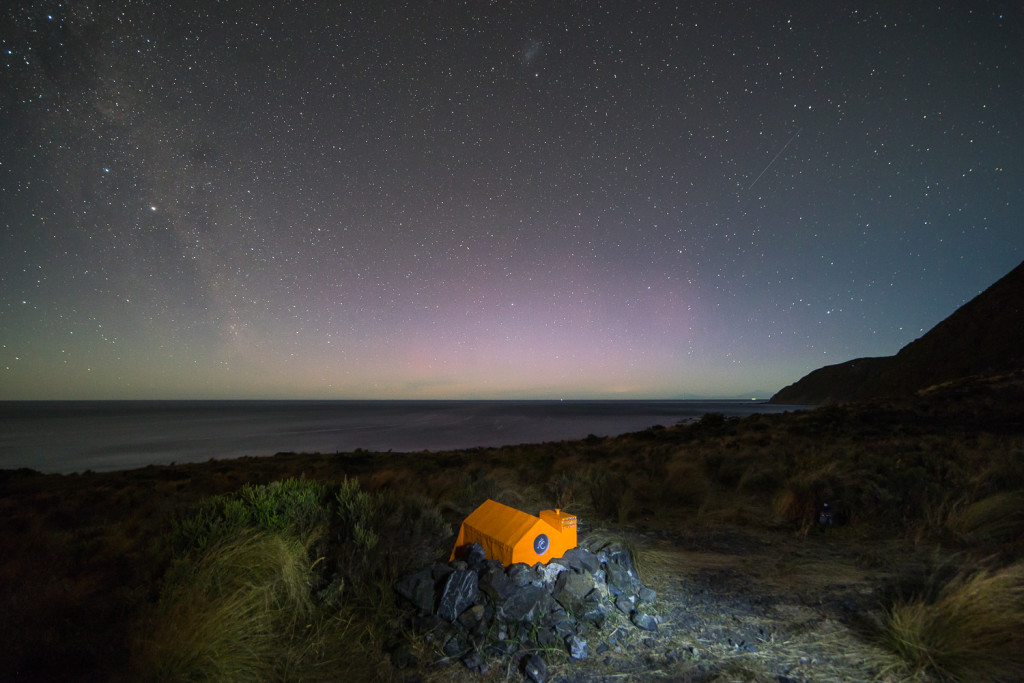
Robin Hut and an aurora
I signed up for progress updates on the new hut project and soon enough details began to be revealed about the Urban Hut Club. There would be 6 huts, 5 in locations along the Kapiti Coast and 1 further roaming hut that would appear in different places during the festival. As each hut was completed and put in place there were previews that meant some could be visited before the official festival launch. We took the opportunity back in January to seek out one of the new huts and invited my cousin Rosie and her family along for the trip.
Whareroa Hut was to be found in Whareroa Farm, a working farm with reserve areas managed between DOC and the Whareroa Guardians Community Trust. The hut could be found after walking on easy paths about a kilometer into the farm. We took a packed lunch and made out way via the provided instructions along farm tracks and then paths through fields. We investigated some of the sights along the way like the interesting old caravan that was now a rest area and info center. Our destination, Whareroa Hut, was a piece of modern design clearly visible on a hill and we enjoyed checking out the design and all the details. Made of reclaimed and found materials the hut was beautifully made and the view was equally stunning. We had lunch at a nearby and very convenient picnic table, the whole trip was a great success.





We didn’t manage to visit any of the other huts during the preview period. At the start of the NZ Festival I managed to catch up with Roaming Hut one morning when it was parked up next to Wharewaka Centre on the Wellington waterfront. Niko was with the hut and we had a quick chat, it was good to catch up in person for the first time in a number of years. Roaming Hut can be found by finding the name on the Urban Hut Club map, or alternatively there is a schedule of appearances on the hut page.
The weekend just gone we spent our Sunday finding the rest of the huts. Spread out from Paekakariki all the way up to Otaki it was a full day of exploration combined with stops to play at the beach and at a very convenient playground. Each hut again has a log book and Alayna wrote a short message in each one about what she liked at each location. There are also stories written for each hut which can be unlocked and accessed online via codes found inside each structure, or there is a printed copy also available.
We started with the ?taki Hut which was the shortest walk (not that I’d class any of the walks as particularly long). A brief walk among dunes and the hut was clearly visible, a construction of driftwood and other found parts. Opening the door there was inside a small stool, a perfect height for Alayna, and she sat and checked out the little shelf that already had a bunch of interesting and intriguing items.






With the beach so close we had to spend some time on the sand. This ended up with Keryn and Alayna drawing a giant spiral which I had to walk the length of. While walking around and around we got to chat with locals walking up and down the beach and watch as the sky started turning from a grey expanse to a patchwork of bright blue broken up by shrinking clouds.


Next up we found our way to the hills above Waikanae and the Hemi Matenga reserve looking for the Waikanae Hut. A short way into the reserve and we were bush bashing to find the Waikanae Hut, upright and shiny on the forest floor. This was easily the busiest hut and also most popular walk, we saw a few families on their way to the hut and more people walking in the reserve. Pro tip: there were mosquitoes in the forest quite keen on snacking on young children, a spot of insect repellant wouldn’t go amiss.






At Paraparaumu we found the Kaitawa Reserve, home to a great playground and flying fox and also the Kaitawa Hut. Our route took us over two bridges where we had the obligatory games of three billy goats gruff before finding the woven structure of Kaitawa Hut facing a burbling stream. There was a cunning cubby built into the floor of the hut which held the log book and hut story and the rest of the hut was woven rods with a canvas roof. It was another beautiful structure at one with the natural surroundings.





Our final stop for the day was to find the Paek?k?riki Hut but first we found a dairy to get ice creams as it was now a very hot afternoon. Walking through the Paek?k?riki Community Gardens we stopped to check out the growing produce, the ripening blackberries and the yarn now hanging broken from a few branches. The hut was surrounded by tall fennel and cicadas were chirping loudly all around. Keryn added some dried fennel to the roof, this hut inviting contributions from those who visit. Alayna finished her popsicle slushy and we relaxed in the shade, just us in the clearing with nature all around.







The Urban Hut Club is a wonderful collection of art that encourages adventure, sparks the imagination and invites contribution from those who visit. I look forward to visiting the huts again, and if you’ve got time I think all the huts are worth seeking out. Go by yourself or take your friends and family and find a hut, read the stories and log books and add your own words, drawings and items to enhance the experience for the next visitors. You won’t be disappointed.
